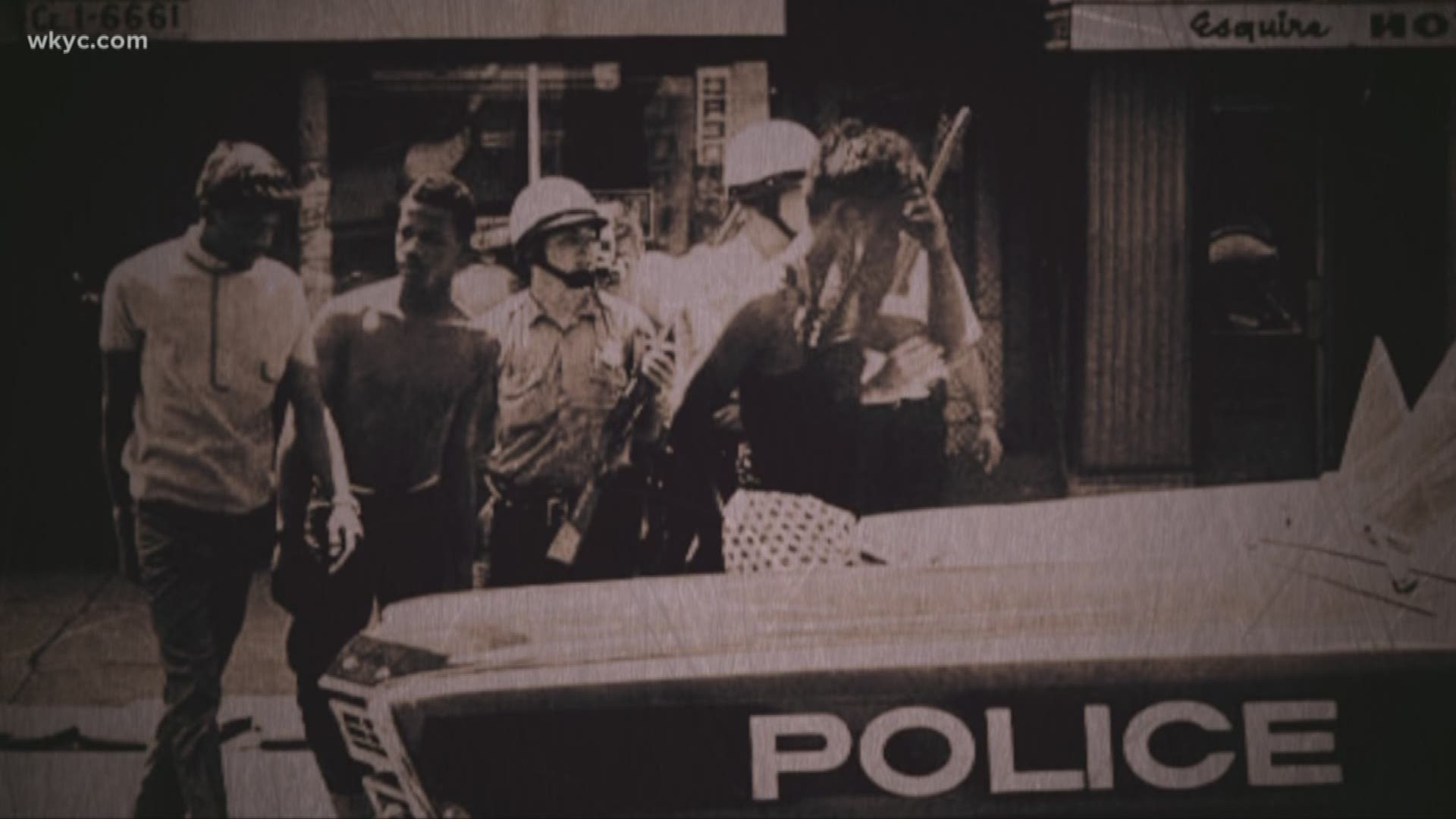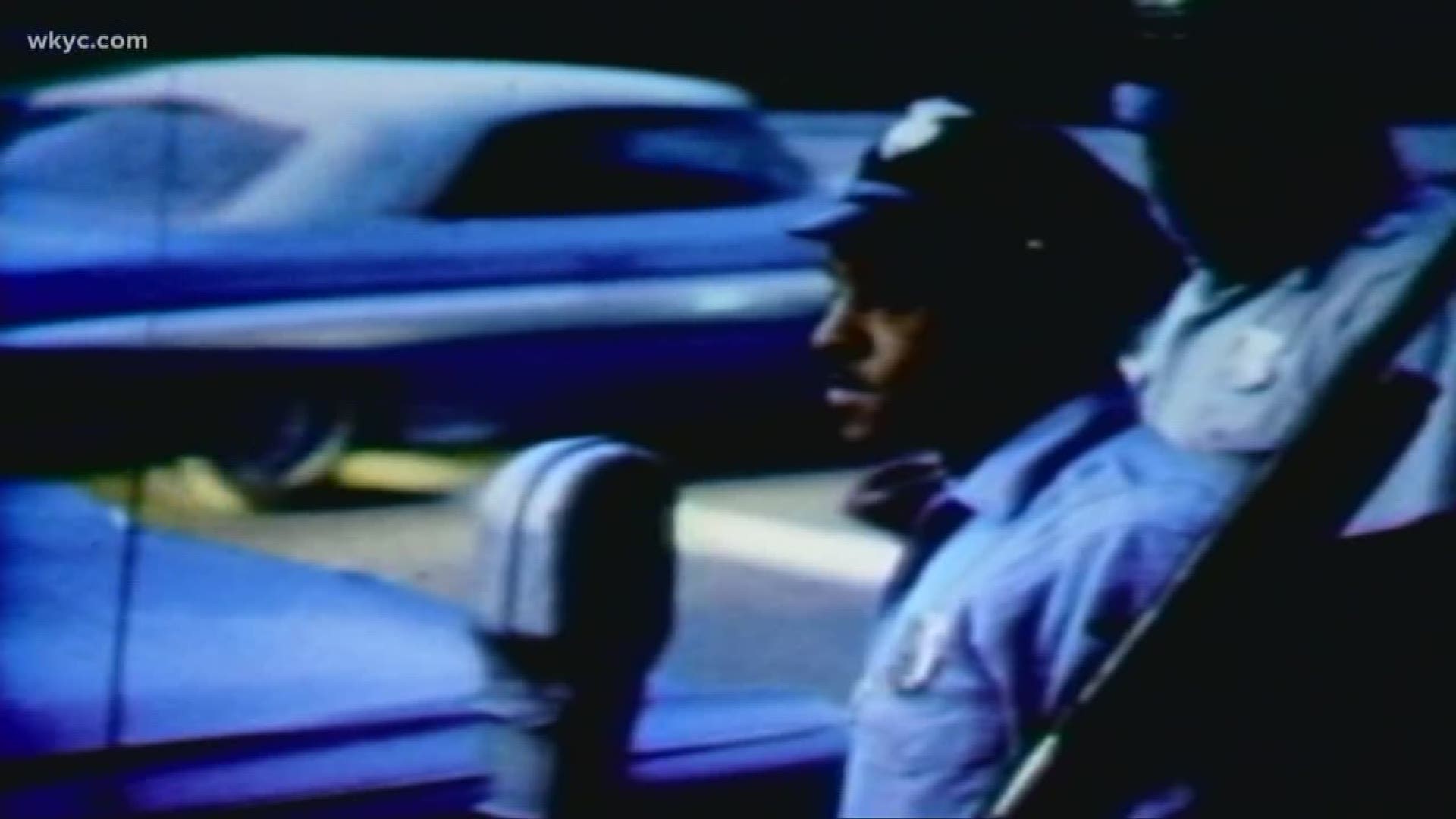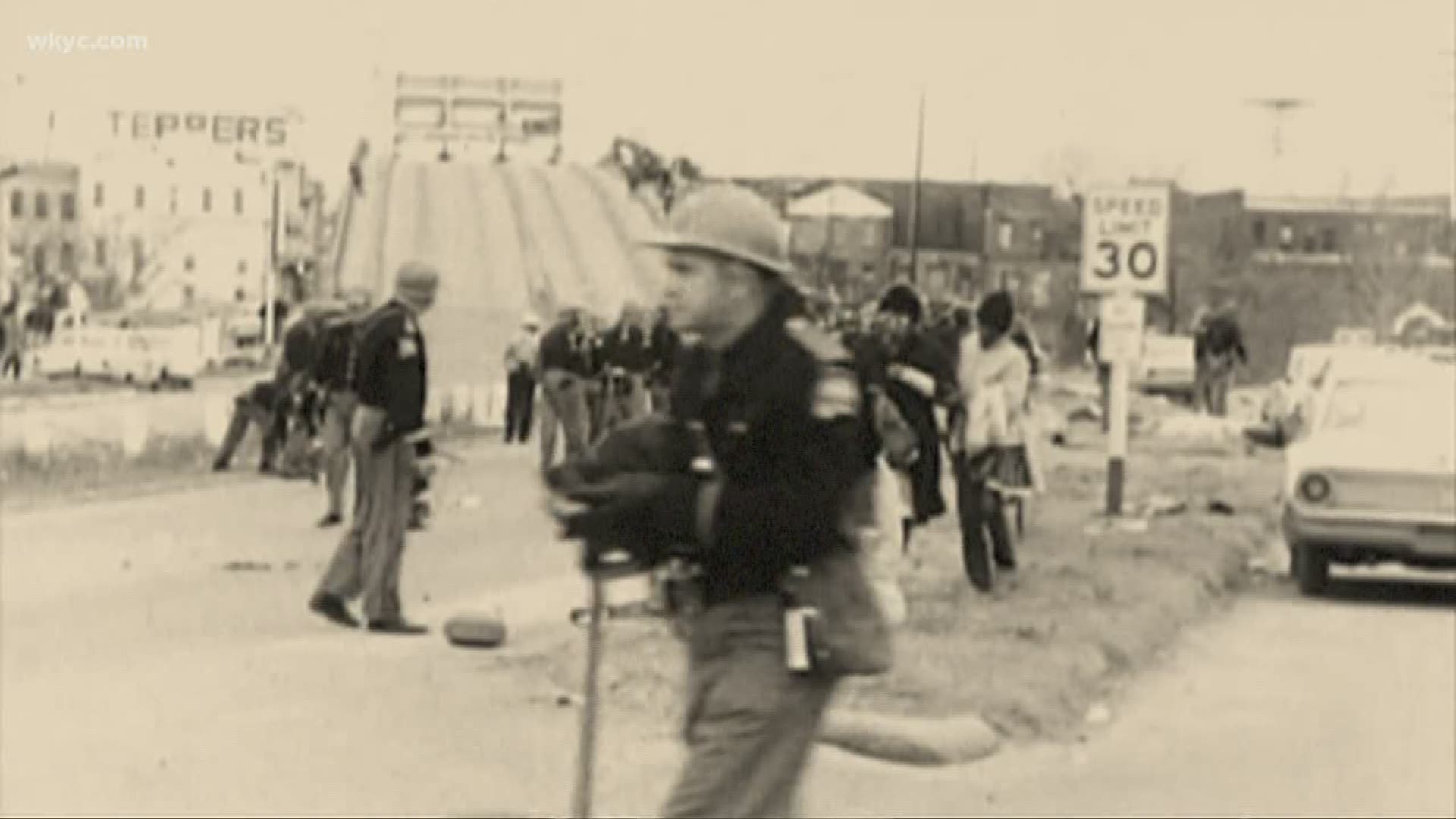CLEVELAND -- Something happened in Cleveland 50 years ago.
Racial tension erupted into the city’s streets. An ambush ignited a gun battle that terrorized an east side neighborhood. At least 10 people died. More than a dozen more were shot or wounded.
No one talked about it – until now.
WKYC is digging up the story that Cleveland tried to bury.
The conversation on the city's race relations seems to stop at the Hough riots. The shootout in Glenville was buried in Cleveland’s history book, threatening a grim blemish on the city’s relationship between police and African-Americans. But by 1968, Cleveland had become a microcosm of racial division in America.
Monday marks 50 years since the deadly Glenville shootout. As racial tension continues across the U.S., those who were involved in the shootout are ready to discuss it. They sat down with WKYC to recall that night, what led up to it and how it became a smudge on the community.
Most concerning, many who were involved – both police and black nationalists – told WKYC they believe this could happen all over again, in the very near future.
The scene that night was one of utter chaos, with multiple shooting locations in a few-block radius, all happening within minutes.
There are also several perspectives on what happened.
'Someone was trying to kill me'
Jerry Viola served the Cleveland Police Department’s robbery unit in the 1960s.
On July 23, 1968, he was on patrol with his partner in Cleveland’s Murray Hill area when they received a report of a tow truck driver who had become the target of gunfire.
The duo responded to the area of Beulah Avenue and Lakeview Road and encountered a police zone car under fire by two men armed with rifles.

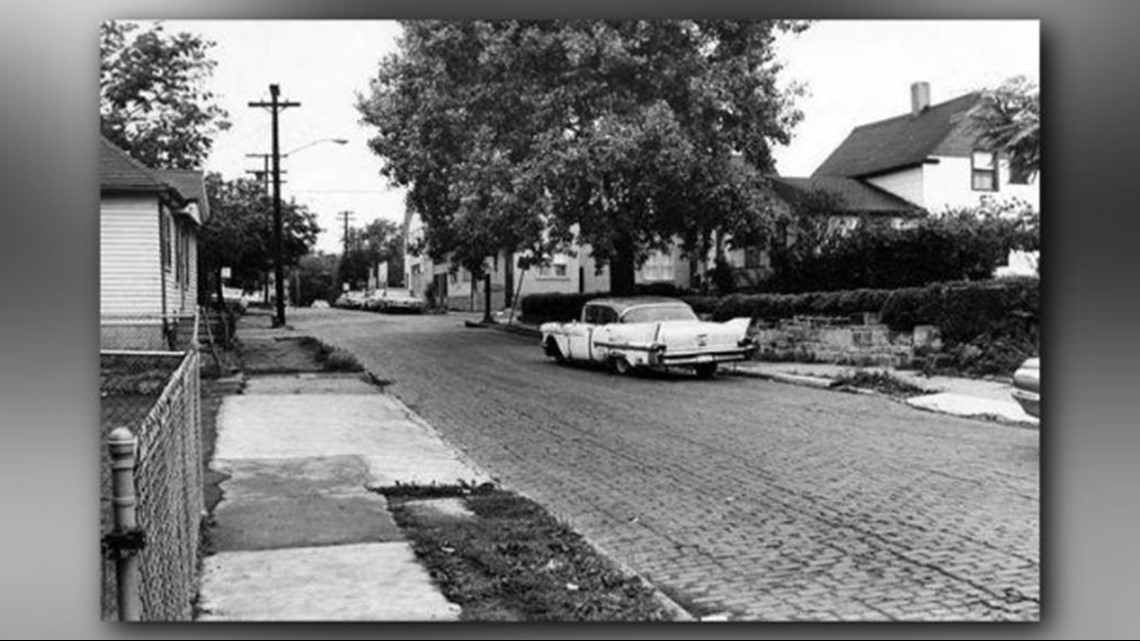
Both cars reached Auburndale Avenue when Viola’s partner, Bob Bennett, fired his shotgun at a man armed with a rifle. The patrolmen bailed from their car to chase after the man.
“I could see tracers going by the car and everything. You could hear all kinds of rounds being fired,” Viola recalled.

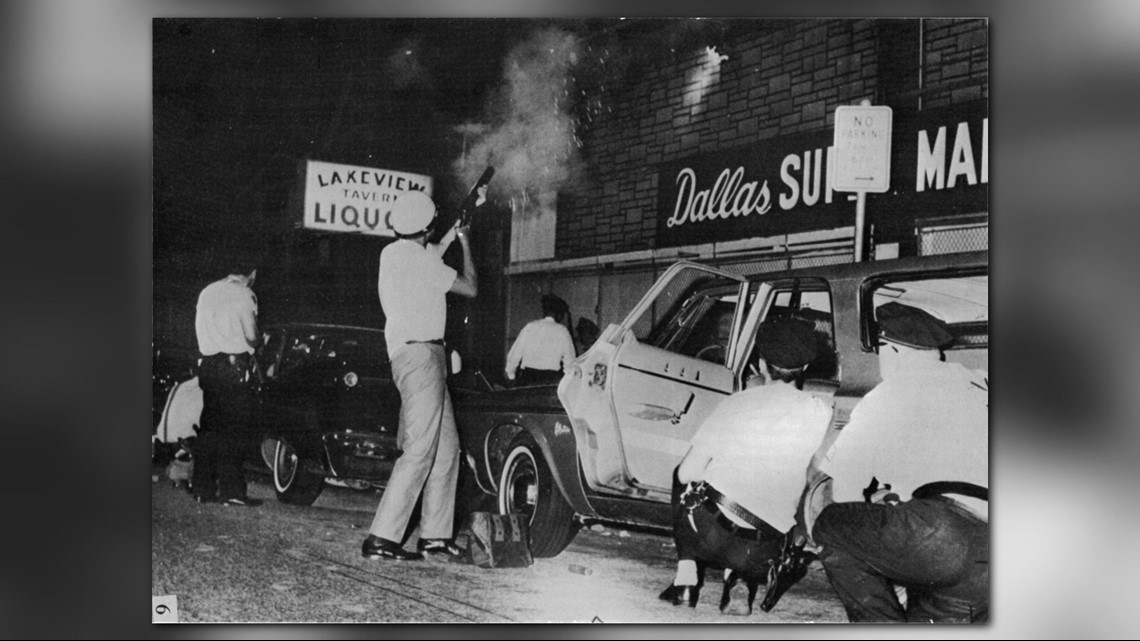
Still, Viola and his partner were unaware of why they were under attack.
“We really didn’t know what was going on. We didn’t realize there were 12, 15, 18 guys out there with weapons and stuff firing at us,” Viola said.
Armed with a .38-caliber revolver, Viola had 12 rounds. He and his partner ditched their car and ended up behind an apartment building, where a gun battle with two other men followed. They exchanged fire before Viola returned to the car for more ammunition.
While retrieving the ammunition, Viola could see one of the patrol officers with his gun pointed at two armed men.
“I heard him holler at them to drop their guns and weapons,” Viola said. “That’s the last time I saw him.”
That officer, identified as Patrolman Willard Wolff, was one of three officers killed that night. Wolff’s partner, Ken Gibbons, was shot seven times but survived.
Viola put Gibbons over his shoulder and carried him around the side of his car, where he and Bennett placed Gibbons in the back seat. Viola backed the car out and drove toward Euclid Avenue to take Gibbons to Lakeside Hospital.
--
Leonard Sims was also in Glenville that night. He was at Lakeside Hospital when he received the call.
Sims, an investigator in the Cleveland Police Department auto crimes unit, responded to Lakeview Road with his partner. When the pair reached a blind spot at Auburndale Avenue, the bullets came flying.
"First, all you heard was automatic weapons and bullets flying off the car," Sims recalled. "Both myself and Earl Brown, we ducked down, then I peeped up to see where I was going and all we could hear was bullets hitting off the car."
Sims said at least 30 bullets from automatic rifles and shotguns struck his car. Thirteen of those bullets pierced his bumper, destroying the fuel pump. One bullet just missed Sims' partner by a foot.
Sims had no idea why he was being fired upon and his radio broadcast had only warned him of men armed with guns. There was no indication that dozens of men were waiting with full automatic weapons.
"I was mad, because someone was trying to kill me," Sims said.
Sims and his partner found themselves in a gun battle with three nationalists behind an apartment building. When one of the men aimed at him, Sims fired his shotgun.
"That's the first time I ever shot anybody," Sims said. "First and last time."
--
Pete Ventura was a rookie cop serving Cleveland's sixth district in 1968. The former Marine worked at Lincoln Electric in Euclid prior to joining the force.
He responded to Lakeview Road and Superior Avenue and left his car, which was eventually burned during the night.
Armed with a shotgun, Ventura responded to the apartments from where the bullets were flying.
"They came running down the alleyway. One took a shot at me. He missed me, because running, you can't hit nobody running with a gun. Well, I shot him and he went down," Ventura recalled.
A nationalist began firing down on Ventura from an apartment window, so Ventura shot him out of the window. He shot a third nationalist running through the alley before firing at a group of men shooting from behind the apartments.
"Later that night, I saw them carrying them away in white sheets," Ventura said. "I don't know who was carrying them, it was dark, but it wasn't policemen."
Another nationalist started shooting at police from a half-window inside a nearby home. Ventura snuck into some bushes against the house and the man stuck his hand out the window to shoot down at Ventura, narrowly missing his leg.
"The dummy stuck his head out and looked down at me," Ventura said. "When he looked down at me, all I did was hit the trigger."
Shooting continued from the second floor of the home, pinning several officers down outside. Ventura says he smashed through a large picture window at the front of the house and expelled tear gas inside, causing the home to catch fire.

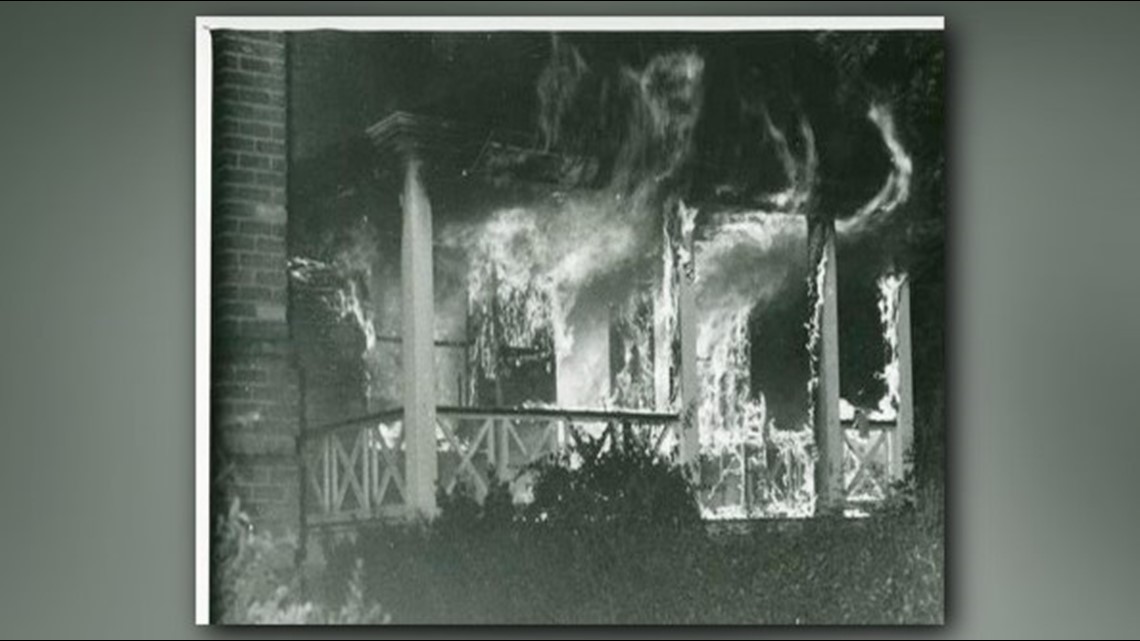
The nationalists inside the home had barricaded themselves on the second floor with mattresses and box springs on the stairway, trapping them with the blaze.
"I got out and I could hear the people inside screaming. They couldn't get out," Ventura said.
After fleeing the burning home, Ventura received word that an officer had been shot outside Lakeview Tavern. Ventura crawled on his stomach on the sidewalk toward the yard where the officer was lying.


Ventura recalled feeling moisture on his stomach as he crawled. He later realized it was blood from Patrolman Wolff.
Ventura says no training could have prepared him or his fellow officers for an attack like that. They had no idea why they were targeted, nor did they have radios to communicate on the ground.
The shooting lasted all night. It was so constant, Ventura doesn't know how many bullets were aimed at him. He could hear the shots and felt bullets striking the ground next to him, but he said his aggressive approach helped him survive the night.
"You never hear the shot that kills you," he said.
Fred Ahmed Evans
Fred Ahmed Evans was born Fred Allen Evans in Greenville, South Carolina. He moved to Cleveland in 1931 and joined the Army until he was honorably discharged in 1952.
Evans reenlisted in 1955, but was soon discharged and returned to Cleveland, where he became a radicalized follower of Malcom's X's teachings, forming the Black Nationalists of New Libya within Cleveland.
Evans rose to leadership within Cleveland's black nationalist community, opening the Afro Culture Shop and Bookstore in Glenville, where he cultivated interest in African culture and activism as Cleveland's racial divide became inflamed.
Historic photos show Evans meeting with Dr. Martin Luther King Jr., who visited Cleveland every other week during the summer of 1967.


Malcolm X also spent time in Cleveland, where he gave his infamous "Ballots and Bullets" speech at Cory Methodist Church on E. 105th Street. Dr. King also spoke there in 1963. Evans became a follower of Malcolm X.

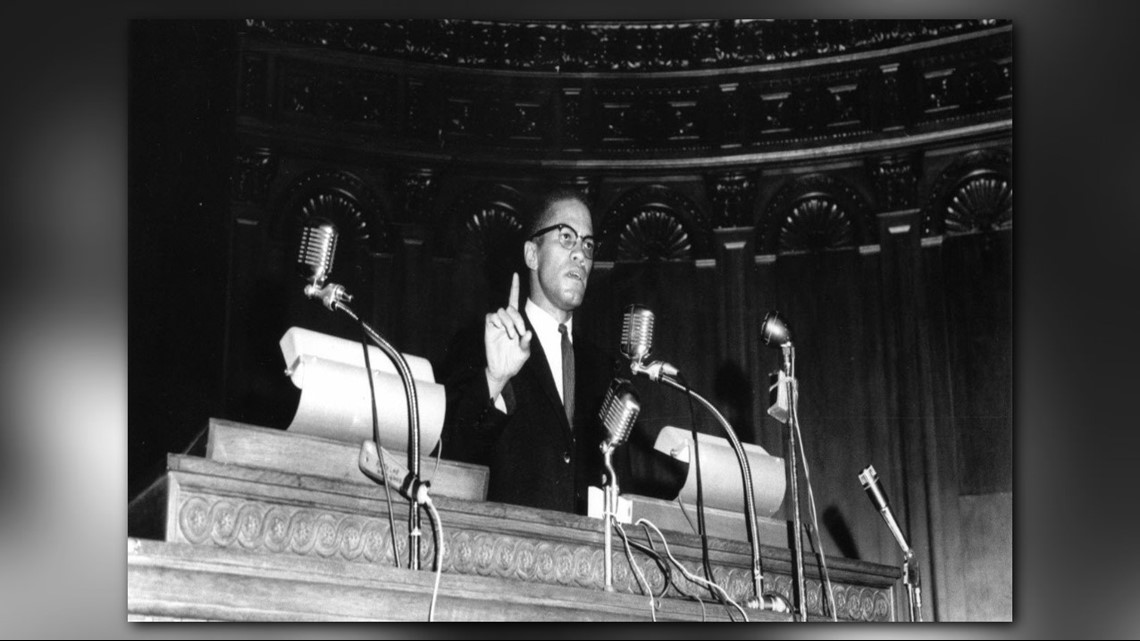
Though Evans' beliefs countered Dr. King's preachings of peace and unity, it's believed that King's assassination triggered Evans' disdain for the white establishment. Soon after King's death, the Black Nationalists of New Libya began collecting firearms inside Evans' Auburndale Avenue home, leading police to conduct surveillance on the area.
Historians say Evans felt threatened by police presence, which may have ignited the shootout. Akili says he does not believe the shootout was premeditated, but conflicting reports suggest that Evans began amassing guns in the days just before the shootout.
Viola said he wondered if the nationalists began shooting at the tow truck driver because he wore a city uniform that resembled a police officer's.
On the night of July 23, 1968, Evans led the ambush on police officers, though some recounts from that night say Evans let his followers do much of the shooting.
A line of defense
Sababa Akili moved to Cleveland's Hough neighborhood in 1956, just one block from League Park.
Born in Mississippi, Akili grew up just 40 miles from where Emmett Till was lynched. Akili's mother moved to Cleveland seeking a safe haven for her children.
Prior to making the move, Akili was exposed to the country's racial divide and violence. He recalls seeing his neighbor's car set on fire as a kid. His neighbor was inside the car.
After moving to Cleveland, Akili gravitated toward the ideals of Malcolm X, adopting the theory that fighting racial violence with violence was a clear message of self-defense.
"I'd seen too many of my friends come back bloodied up," Akili said.
He recalls the racial divide within Cleveland's neighborhoods. Venturing past Superior Avenue into the area of Sowinski Avenue meant trouble for African-Americans during the 1960s.
Akili's siblings attended an elementary school on the north side of Superior Avenue. He remembers accompanying his brother at the end of the school year to help a teacher. As Akili peered out the window, he recalls seeing a gang of white men gathering outside.
"I knew that we was going to be in some trouble," Akili said. "We tried to wait until they went around on the other side and when we left out of there, we just ran as fast as we could to get past Superior. They saw us, but they couldn't catch us. They was throwing stuff at us and everything."
Superior Avenue was the great divide between whites and African-Americans. If could reach your side of the street, you were safe, Akili said.
"It was real ethnic and you stayed -- or you were supposed to stay -- in your neighborhood. If you wandered outside your neighborhood, no telling what would happen to you," he added.
Akili stayed out of trouble working for former Cleveland Browns John Wooten and Jim Brown. He developed what he calls an outsider's perspective after becoming frustrated by his education, as he felt what he was being taught didn't accurately reflect what was happening in society. He even says his former math teacher, George Cicero, was a Nazi who was exposed after bombing several schools in the Cleveland community.
An article printed in the Aug. 5, 1978 edition of the Medina Gazette reported that Cicero was charged with several bombing offenses, including Fairmount Elementary School in Beachwood. Cicero was accused of at least eight pipe bombings at local schools and six bombings at pornography shops. A search of Cicero's Warrensville Heights apartment yielded three bombs, while nine cases of dynamite were located in a office supply store he owned.
When Akili reached high school, he was exposed to Evans and the ideals of the Black Nationalists of New Libya.
Akili recalls looking out the window toward the end of a school day and spotting six males dressed in African attire walking down the street. He and his friends ran outside, and that's when Akili first encountered Evans.
"They were just walking through the community," Akili said. "But coming behind them was a series of police cars, a whole line of police cars. ...The police jumped out their cars and started arresting all of them."
Akili said he was hooked. He had to find out what had happened to Evans. The more he learned, the more socially involved he became, adhering to Malcolm X's teachings of "by any means necessary."
Akili joined the Afro Set Black Nationalist Party for Self-Defense, an organization that armed all of its members. He eventually rose to second in command.
"That's the only thing why I'm probably able to sit here today, is because we were armed," Akili said. "We didn't hide the fact that we were armed. ...It was clear to us that if we didn't defend ourselves, we couldn't rely on anybody else to defend us."
The FBI had files on Evans, Akili and a number of black nationalists and organizations. Akili says his name was added to a security index, meaning he'd be under close observation should any form of violence or uprising occur in the U.S.
"How could I be a threat to national security when our people didn't have any security?" Akili countered. "Black people never had any security in this country."
Akili wasn't directly involved with Evans or the Glenville shootout. He was at a restaurant at E. 103rd Street and Superior Avenue when he heard a line of eastbound cop cars rush past. Akili jogged toward E. 116th Street, where a civilian told him police were in a shootout with the black nationalists.
Akili called the Afro Set headquarters and was told to meet there as soon as possible.
"That's what stopped me from going up there [to the shootout]," Akili said. "There was nobody in command down there, so I'm the person in command, so I went back down to the headquarters."
Chaos met Akili back at the Afro Set headquarters, where hundreds of community members had gathered. But before Akili could organize anything, police arrived and shot tear gas into the building. He was eventually detained and taken to the fifth precinct.
"When we got over there, the jails were packed with black people," he recalled.
Akili says no officers or supervisors wanted to sign the arrest records for all the people who were detained. He was eventually released, but demanded an officer drive him to his neighborhood.
Akili left Cleveland for Newark in 1969 after he says he determined that the nationalist movement in Cleveland wasn't enough. He still feels that police exaggerated the events that took place during the shootout, claiming he doesn't believe there were as many nationalists involved as police say.
"I think that the police wanted to put forth that kind of image because the casualties were so uneven," he said.
FBI secrets
FBI documents later revealed the discord between the government, white establishment and black nationalists during the 1960s.
Those documents, which were recently declassified, are now available at the national archives in Maryland, revealing hundreds of pages of surveillance, observation and insight on black nationalists.
The FBI agents who penned those files likely had no idea they'd ever reach the public eye, but local author Jim Robenalt and WKYC filtered through the documents, uncovering secrets the government hoped to bury, such as COINTELPRO.
Akili, Evans and several other local nationalists are named in documents under COINTELPRO, which had been originally created to defeat communists. The program shifted its focus to black nationalists in the 1960s.
FBI files: Fred Ahmed Evans by WKYC.com on Scribd
Don Freeman was a Cleveland public school teacher from 1961 to 1965 until he was fired for what he says was his political association with Malcolm X. He was also involved with the Revolutionary Action Movement (RAM) which was the precursor to the Black Panther Party.
"I was a teacher by day and a radical by night," he said.
Freeman was also under watch by the FBI and COINTELPRO. He says he was so heavily targeted, he wasn't even allowed to rent a P.O. box, meaning he had to use his parents' home address.
"I was on the list. ...It indicated that I sure enough had to watch my back," he said. "It would have been nice if I had consult behind my back in terms of all the things that occurred, in terms of being under constant surveillance."
According to one agency memo, COINTELPRO was established to "prevent the coalition of nationalist black nationalist groups... and prevent nationalist from gaining respectability."
The feds knew a lot about area nationalists, but much of that information was withheld from police. Some COINTELPRO information was leaked to Plain Dealer reporter Doris O'Donnell, resulting in stories that often fueled the fire of racial tension.
When the feds learned that trouble was bubbling in Cleveland, they tipped off police, which led to the increased surveillance outside Evans' home.
FBI files - Nationalists in Cleveland by WKYC.com on Scribd
Aftermath
At least 10 people were killed that night. Three were officers, one was a civilian and the rest were nationalists. The exact death toll remains fuzzy, because the home that burned with nationalists inside was immediately destroyed in the days following the shootout.
Three days of rioting, looting and arson followed the shootout and the National Guard was called to restore order.
Sixty-three businesses were damaged during that three-day span for a total loss of $2.6 million, according to Case Western. That amount equals about $18 million today.

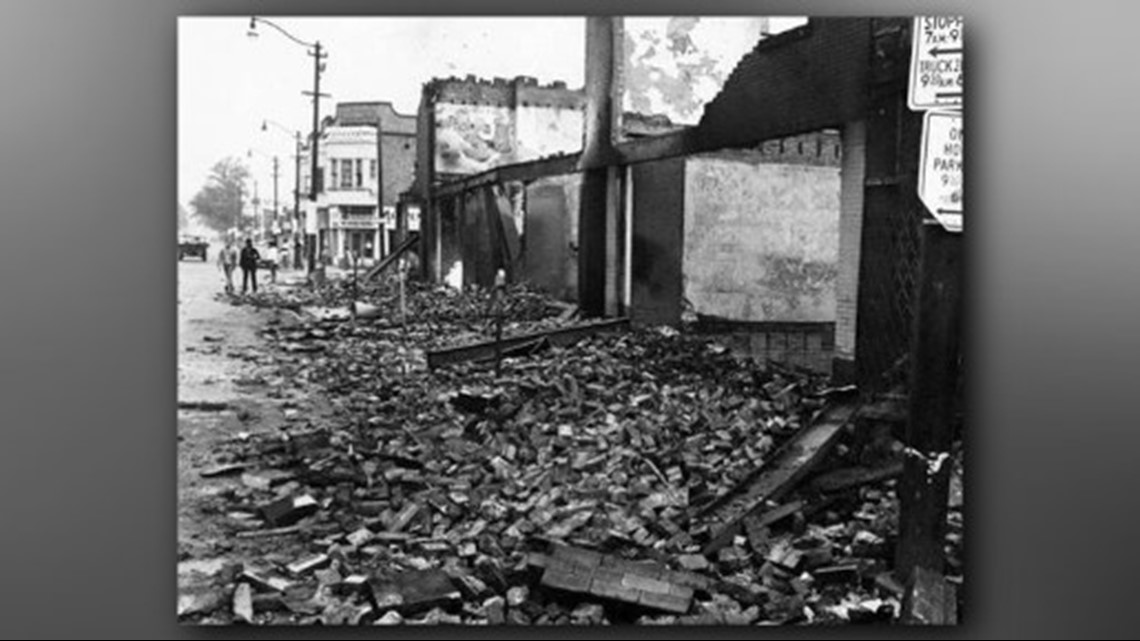
Cleveland Mayor Carl Stokes ruled that only African-American police officers would be permitted to patrol the Glenville neighborhood in the days following the shootout. He believed that would help restore order and prevent further loss of life.
Evans gave himself up to police the night of the shootout. He had demanded that an African-American police officer take him into custody, but Ventura says he was the first to encounter Evans prior to his arrest.
Ventura also claims that Evans was too afraid to shoot any officers, as he claimed his gun had jammed.
"He said, 'If my gun hadn't of jammed, I'd have killed more of you,'" Ventura recalled.
Evans went to trial and was convicted on seven counts of murder. He was sentenced to death by electrocution, but the Furman v. Georgia ruling, which deemed capital punishment unconstitutional in 1972, reduced Evans' sentence to life in prison. He died of cancer in 1978.

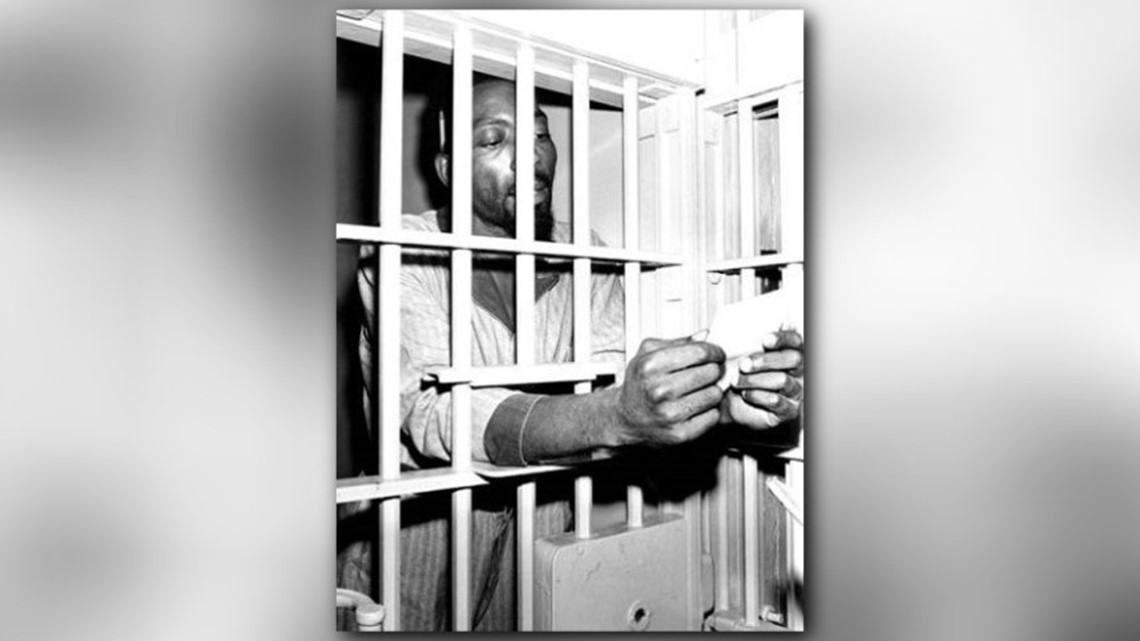
The Glenville shootout represented another smear on Cleveland's history of race relations. Though many modern textbooks discuss the Hough Riots of 1966, the Glenville shootout often remains unmentioned.
James Robenalt is a Cleveland lawyer who penned Ballots and Bullets: Black Power Politics and Urban Guerrilla Warfare in 1968 Cleveland, which was just released this month. The book centers on the Glenville shootout and unrest along the racial divide continues to this day.

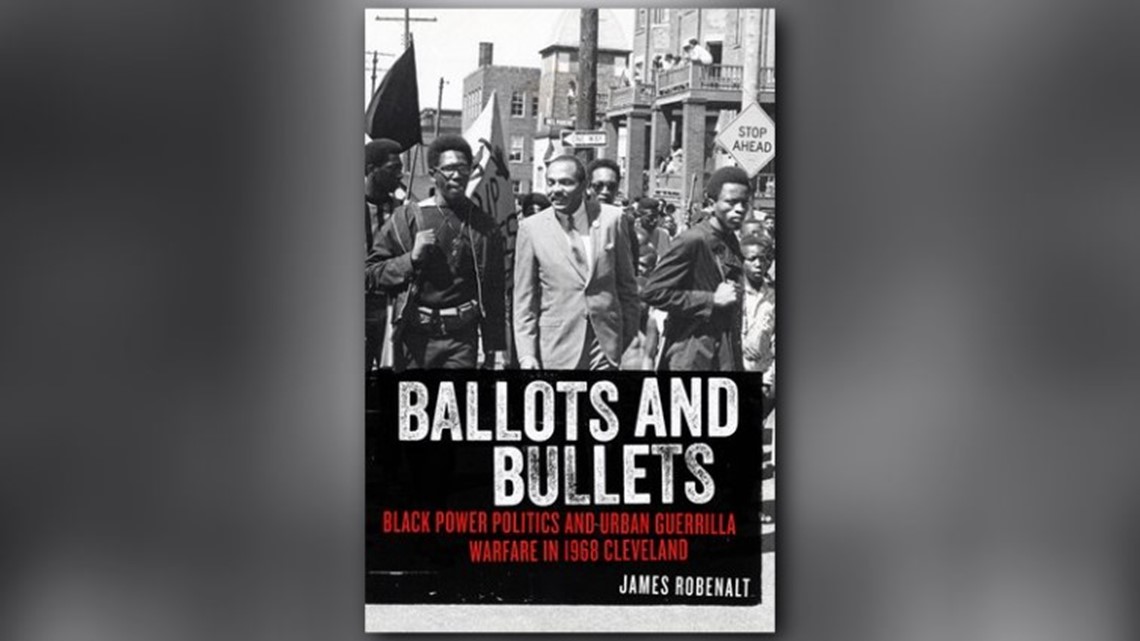
"The main reason that this story hasn't really been told is everybody involved in it has a reason for burying it," Robenalt noted. "Carl Stokes doesn't want it told because it ruined his mayorship."
Stokes had become a rising star within the Democratic party and received the support of Martin Luther King Jr. during his mayoral election. Dr. King and Stokes reached out to local black nationalists in attempt to expand King's influence. Stokes could be seen walking alongside black nationalists, including Akili, armed with guns on Cleveland's streets.

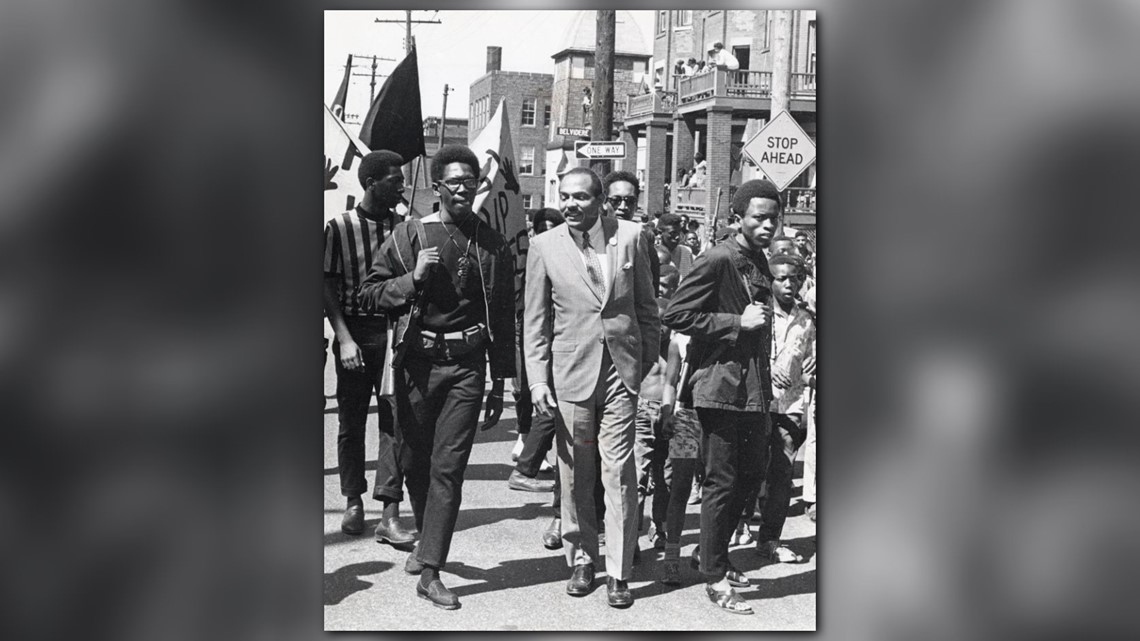
The Glenville riots tarnished Stokes' career.
The money that Evans used to purchase the rifles used by nationalists during the shootout came from Cleveland Now, a joint public and private funded anti-poverty program established by Stokes for the revitalization of the city.
Cleveland Now was intended to transform Cleveland as part of Hubert Humphrey's marshal plan to rebuild American cities. Plans were also in the works to make Stokes Humphrey's running mate during the presidential election.
Instead, the money meant to lift Cleveland from its crumpled state funded the arms that took the lives of three police officers.
When the public learned where that money went, donations quickly dropped and the Cleveland Now program folded. Robenalt says that damaged Stokes' political career.
"The police don't particularly want it [the story of the Glenville shootout] told because it makes people talk about police violence in the past that kind of provoked some of this over a long period of time," Robenalt added. "...The black community in Cleveland doesn't want to retell it because it's African-Americans ambushing policemen. Everybody has a reason to bury this story and it got buried 50 years ago."
The problem with pretending the past never happened, Robenalt says, is that the truth becomes distorted over time.
"People don't heal from it if they don't address it with honesty in a straightforward way," Robenalt said.
Will history repeat itself?
Robenalt believes an incident similar to the Glenville shootout could happen today. Ventura agrees.
"Oh yeah, I think it could," Ventura said. "The thing is, you've got to nip it in the bud before it happens. There's a lot of dissension in this country today and it's a shame but you've got to nip it in the bud before it gets out of hand over here."
Ventura believes dialogue is the starting point in dissolving racial tension to avoid conflict. Meeting dissension with immediate extreme action is a mistake, he says, because action should occur in steps.
"You start with honey. If honey doesn't work, then you use vinegar," he said.
Akili also believes the country's current social climate could erupt in another violent incident.
"We have to do our job to keep that from happening," he said. "How long do you think people can sit at home and see a 17-year-old kid shot in the back three times, no gun?"
In order to avoid more violent incidents, Akili says police should scale back their role, which he believes have become the judge, jury and executioner on the streets.
"There's judges and there's juries," he explained. "You're supposed to protect and serve."
Taye Uhuru wasn't even alive when the Glenville shootout occurred. But his uncle, Omar Majid, was accused of supplying weapons to Evans and the Black Nationalists of New Libya.
Though Uhuru never witnessed the terror that unfolded on the night of July 23, 1968, he says the country's current climate has helped him understand the impact the shootout had on the city.
"I think July 23, 1968 is one of the most important days in Cleveland history," he said.
Hear more
WKYC has created a podcast to tell more of the Glenville shootout story. Hear extended interviews in greater detail and learn more from author Jim Robenalt in our six-part series.
Listen to Episode One here.

